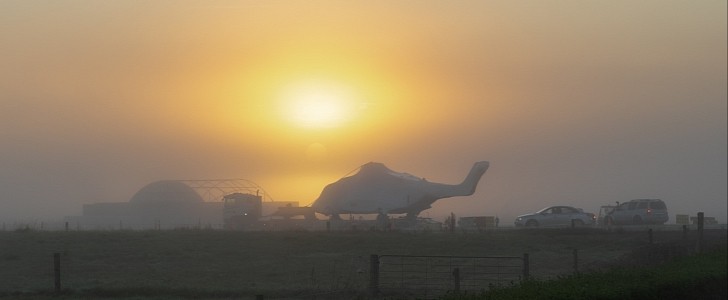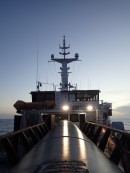Rocket Lab's next mission will be different. A helicopter will attempt to capture the first stage of the Electron as it returns to Earth from space as part of the company's effort to make it a reusable rocket. The commercial rideshare mission is scheduled for take-off in the second half of April.
Rocket Lab has conducted three successful ocean recovery missions in which the Electron returned to Earth and descended into the water, slowed down by a parachute. The data collected during these missions helped improve the rocket's design, making it more resistant to the harsh re-entry environment. Not only that, but it allowed the company to better prepare for its 26th Electron launch, which will involve a mid-air helicopter capture for the first time.
The mission, titled "There and Back Again," is expected to lift off from Launch Complex 1 on New Zealand's Mahia Peninsula. The Electron will carry 34 payloads from different commercial operators to Earth's low orbit.
When the rocket's first stage returns from space, a customized Sikorsky S-92 twin-engine helicopter will be ready to catch it. Before lift-off, the aircraft will move into position in the capture zone, an area located 278 km (173 miles) off the coast of New Zealand.
Shortly after launch, the Electron's first and second stages will separate. Then, the first stage will plunge back into Earth's atmosphere and reach speeds of almost 8,300 kph (5,157 mph) as it descends.
A drogue parachute will be deployed at an altitude of 13 km (8 miles), which will significantly slow down the stage. Rocket Lab's Sikorsky S-92 will snatch the returning stage and capture the parachute with a hook as it approaches the capture zone.
After everything is secured, the aircraft will take the rocket's stage safely back to land. That's where Rocket Lab will run a thorough analysis of the vehicle and see if it's fit to be reused.
The mission is scheduled for lift-off in the second half of this month within a 14-day launch window that opens on April 19th.
The mission, titled "There and Back Again," is expected to lift off from Launch Complex 1 on New Zealand's Mahia Peninsula. The Electron will carry 34 payloads from different commercial operators to Earth's low orbit.
When the rocket's first stage returns from space, a customized Sikorsky S-92 twin-engine helicopter will be ready to catch it. Before lift-off, the aircraft will move into position in the capture zone, an area located 278 km (173 miles) off the coast of New Zealand.
Shortly after launch, the Electron's first and second stages will separate. Then, the first stage will plunge back into Earth's atmosphere and reach speeds of almost 8,300 kph (5,157 mph) as it descends.
A drogue parachute will be deployed at an altitude of 13 km (8 miles), which will significantly slow down the stage. Rocket Lab's Sikorsky S-92 will snatch the returning stage and capture the parachute with a hook as it approaches the capture zone.
After everything is secured, the aircraft will take the rocket's stage safely back to land. That's where Rocket Lab will run a thorough analysis of the vehicle and see if it's fit to be reused.
The mission is scheduled for lift-off in the second half of this month within a 14-day launch window that opens on April 19th.
While we've conducted ocean recoveries during previous missions, and carried out helicopter captures using replica stages, this is the first time we're attempting to catch Electron with a helicopter during a real launch! It's all part of making Electron a reusable rocket. pic.twitter.com/DqRryUvDPX
— Rocket Lab (@RocketLab) April 5, 2022






